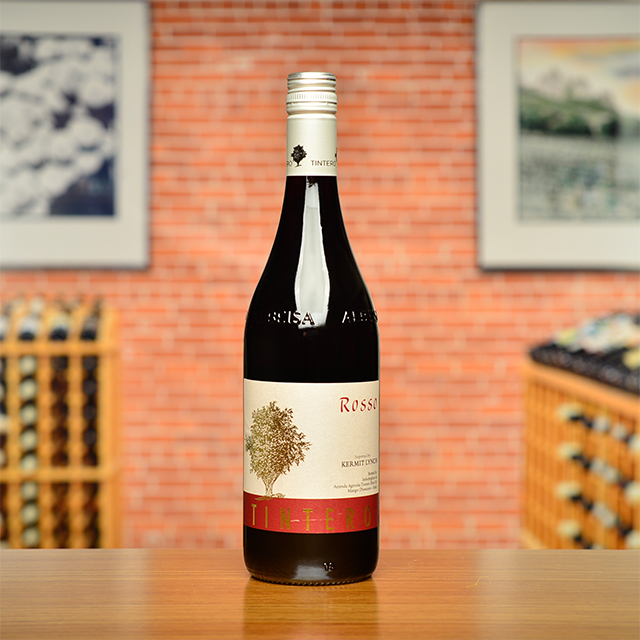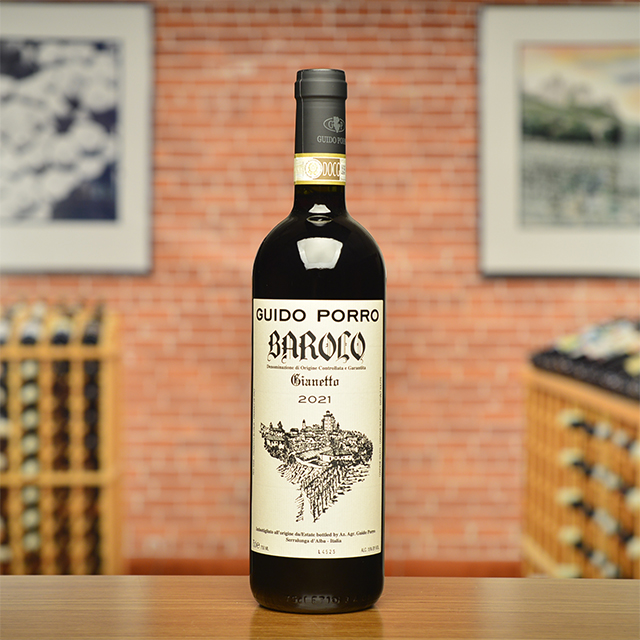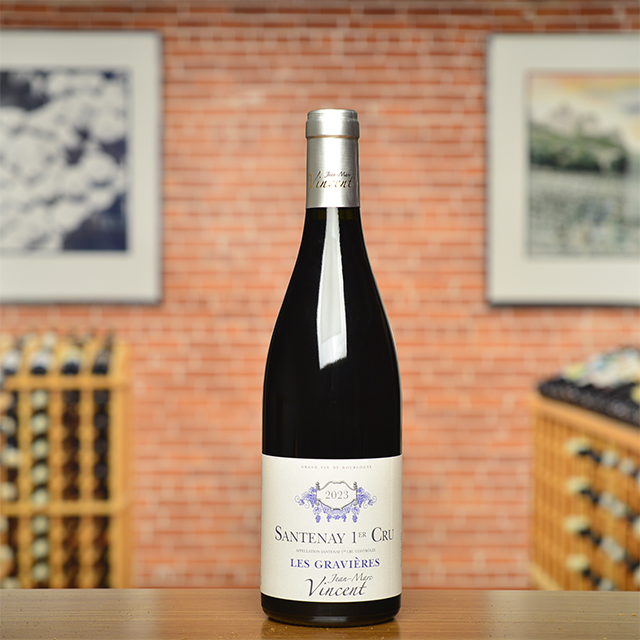Notify me
2020 Barbera d’Alba “Vigna Santa Caterina”
Guido Porro
Porro’s Barbera straddles the line between an everyday pizza wine and a more substantial red that expresses nuance and can even improve with age. For a Wednesday night pasta dinner, it checks all the boxes: ripe berry fruit with cleansing acidity; richness contrasted by vivaciousness. However, if you have a cellar, don’t hesitate to lay down a few bottles: in a balanced vintage, this wine has serious potential. The 2003, for example, still drinks superbly. After all, these Barbera vines sit in a privileged Barolo site, so there is no shortage of pedigree.
—Anthony Lynch
| Wine Type: | red |
| Vintage: | 2020 |
| Bottle Size: | 750mL |
| Blend: | Barbera |
| Appellation: | Barbera d’Alba |
| Country: | Italy |
| Region: | Piedmont |
| Producer: | Guido Porro |
| Winemaker: | Guido Porro |
| Vineyard: | 25 - 30 years, 1 ha |
| Soil: | Clay, Limestone |
| Aging: | 4-6 months in botti then about 6 months in stainless steel before bottling |
| Farming: | Sustainable |
| Alcohol: | 14.5% |
More from this Producer or Region

2021 Barolo “Marassio”
Italy | Piedmont
Unusual for La Morra, the soil here is rich in limestone with veins of chalk, giving Giulia’s most dense, profound, earth- and mineral-driven Barolo.

2024 Dolcetto d’Alba “V. Pari”
Italy | Piedmont
December Adventures Club ~ Prime placement in a great vineyard site provides exquisite balance, gentle tannin, and notes of brambly fruit.

2017 Laboro Disobedient
Italy | Piedmont
Made from Riserva-quality Barolo Nebbiolo, it’s a throwback to the Baroli of yesteryear, profound and stately.

2022 Dolcetto di Diano d’Alba “Sörì Cristina”
Italy | Piedmont
Supple, pretty notes of freshly crushed blackberries and raspberries—it will pair well with pretty much anything.

2008 Barolo Riserva “Bussia Cascina Dardi”
Italy | Piedmont
**Extremely limited quantities, maximum three bottles per purchase.**

2024 Vino Rosso
Italy | Piedmont
Finding a wine as tasty and versatile at this price is not an easy task.

2018 Barolo “Vigna Rionda”
Italy | Piedmont
Already elegant, this Barolo shows astonishing poise and a different mesmerizing feature of its kaleidoscopic personality every time you take a sip.

2024 Barbera d’Alba “Vigna Santa Caterina”
Italy | Piedmont
For pasta night, it checks all the boxes: ripe berry fruit with cleansing acidity; richness contrasted by vivaciousness.

2023 Langhe Nebbiolo “Pian delle Mole”
Italy | Piedmont
Giulia Negri is making some of the best and most exciting wines in Italy, truly world class. She also happens to be one of the nicest people you could hope to meet.

2021 Barolo “Gianetto”
Italy | Piedmont
The Barolos of Serralunga are renowned for their power and longevity, and while Porro’s Gianetto is not the unyielding, tannic beast of old, it will certainly benefit from a few years in your cellar.
About The Producer
Guido Porro
About The Region
Piedmont

Kermit’s love affair with the great reds of Piemonte dates back to the early days of his career: the very first container he imported from Italy, in fact, featured legendary 1971 and 1974 Barolos from Vietti and Aldo Conterno. Regular visits since then have seen our portfolio grow to now twelve Piemontesi estates, with a strong focus on the rolling hills of the Langhe.
Nebbiolo rules these majestic, vine-covered marl slopes, giving Italy’s most mystifyingly complex, nuanced, and age-worthy reds. When crafted via traditional production methods—long macerations and extensive aging in enormous oak botti—the powerful, yet incredibly refined Barolos and Barbarescos provide haunting aromatics of tar, raspberry, incense, tea, roses, and more. At times austere in their youth but well worth the wait, they pair beautifully with the hearty local cuisine starring veal in many forms, braised beef, pastas like tajarin and agnolotti, and of course, Alba’s famous white truffles.
Surrounded by mountains on three sides, Piemonte’s climate is continental, with baking hot summers and cold winters. Nebbiolo is only part of the story here: juicy, fruity Barberas and Dolcettos represent the bread and butter throughout the region, and other native grapes like Freisa, Croatina, and the white Arneis are also noteworthy. Value abounds in the Monferrato, while Alto Piemonte also has its share of thrills to provide.
Every corner of Piemonte is rich with tradition, especially when wine is concerned. It’s no wonder we have been singing the region’s praises for over forty years.
More from Piedmont or Italy
2021 Barolo “La Tartufaia”
Giulia Negri Italy | Piedmont
2017 Laboro Disobedient
A. & G. Fantino Italy | Piedmont
2023 Rosso Dei Dardi
A. & G. Fantino Italy | Piedmont
2022 Dolcetto di Diano d’Alba “Sörì Cristina”
Il Palazzotto Italy | Piedmont
2020 Barbera del Monferrato “Perlydia”
Cantine Valpane Italy | Piedmont
2024 Vino Rosato
Tintero Italy | Piedmont
2022 Barbaresco “Vicenziana”
Silvio Giamello Italy | Piedmont
2024 Moscato d’Asti “Sorì Gramella”
Tintero Italy | Piedmont
Vermouth di Torino Bianco “Aperitiv dla Tradission”
Bèrto Italy | Piedmont
2023 Langhe Nebbiolo “Pian delle Mole”
Giulia Negri Italy | Piedmont
2018 Barolo “Vigna Rionda”
Guido Porro Italy | Piedmont
2020 Barolo “Ravera di Monforte”
Piero Benevelli Italy | Piedmont
2021 Barolo “La Tartufaia”
Giulia Negri Italy | Piedmont
2017 Laboro Disobedient
A. & G. Fantino Italy | Piedmont
2023 Rosso Dei Dardi
A. & G. Fantino Italy | Piedmont
2022 Dolcetto di Diano d’Alba “Sörì Cristina”
Il Palazzotto Italy | Piedmont
2020 Barbera del Monferrato “Perlydia”
Cantine Valpane Italy | Piedmont
2024 Vino Rosato
Tintero Italy | Piedmont
2022 Barbaresco “Vicenziana”
Silvio Giamello Italy | Piedmont
2024 Moscato d’Asti “Sorì Gramella”
Tintero Italy | Piedmont
Vermouth di Torino Bianco “Aperitiv dla Tradission”
Bèrto Italy | Piedmont
2023 Langhe Nebbiolo “Pian delle Mole”
Giulia Negri Italy | Piedmont
2018 Barolo “Vigna Rionda”
Guido Porro Italy | Piedmont
2020 Barolo “Ravera di Monforte”
Piero Benevelli Italy | Piedmont
Kermit once said...

Kermit once said...
When buying red Burgundy, I think we should remember:
1. Big wines do not age better than light wine.
2. A so-called great vintage at the outset does not guarantee a great vintage for the duration.
3. A so-called off vintage at the outset does not mean the wines do not have a brilliant future ahead of them.
4. Red Burgundy should not taste like Guigal Côte-Rôtie, even if most wine writers wish it would.
5. Don’t follow leaders; watch yer parking meters.
Inspiring Thirst, page 174

















